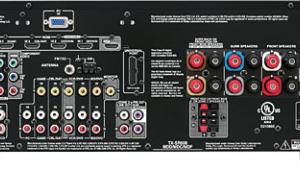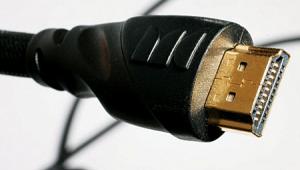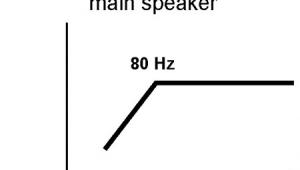THX ULTRA: Episode 2 Page 2
 It's fitting that Snell's first Ultra 2 speakers are clearly real-world in variety: an L/C/R model designed primarily for cabinet mounting and an in-wall dipole surround. You could consider the XA1900THX the cabinet- or space-conscious version of Snell's well-regarded XA90ps tower, given that it uses all of the same components. Chief among them are the dual 8-inch woofers, the dual 2.5-inch midrange drivers (mounted in a separate enclosure), a 1-inch aluminum-dome tweeter, and hand-tuned, in-phase crossover networks. The crossovers are individually tuned to within half a decibel of Snell's master reference units. Snell uses a three-layer sandwich approach for the XA1900THX's baffle, isolating it from the cabinet with a 0.75-inch HDF outer layer, a 1.5mm neoprene damping layer, and a 0.75-inch MDF inner layer. The XA (or eXpanded Array) design employed on the XA1900THX is naturally in tune with Ultra 2's goals. It primarily uses driver placement and crossover adjustment to supply constant, balanced vertical directivity (broad enough for placement flexibility yet focused enough to minimize reflection anomalies) and a wide sweet spot with virtually no change in frequency response or perceived balance. Since many home theaters don't allow for optimal speaker placement, the XA1900THX has a screen-compensation switch that adjusts for placement behind an acoustically transparent screen, a boundary switch that adjusts for the midbass weight that cabinet placement adds, and a treble adjustment that matches the speaker to the rest of the system and the room. The XA1900THX is also video-shielded, supplies gold-plated five-way binding posts, and can be biamped or biwired. The cabinet is Snell's usual meticulous construction, finished here in a utilitarian black and measuring 21 inches high by 16.5 wide by 11 deep with a weight of 54 pounds.
It's fitting that Snell's first Ultra 2 speakers are clearly real-world in variety: an L/C/R model designed primarily for cabinet mounting and an in-wall dipole surround. You could consider the XA1900THX the cabinet- or space-conscious version of Snell's well-regarded XA90ps tower, given that it uses all of the same components. Chief among them are the dual 8-inch woofers, the dual 2.5-inch midrange drivers (mounted in a separate enclosure), a 1-inch aluminum-dome tweeter, and hand-tuned, in-phase crossover networks. The crossovers are individually tuned to within half a decibel of Snell's master reference units. Snell uses a three-layer sandwich approach for the XA1900THX's baffle, isolating it from the cabinet with a 0.75-inch HDF outer layer, a 1.5mm neoprene damping layer, and a 0.75-inch MDF inner layer. The XA (or eXpanded Array) design employed on the XA1900THX is naturally in tune with Ultra 2's goals. It primarily uses driver placement and crossover adjustment to supply constant, balanced vertical directivity (broad enough for placement flexibility yet focused enough to minimize reflection anomalies) and a wide sweet spot with virtually no change in frequency response or perceived balance. Since many home theaters don't allow for optimal speaker placement, the XA1900THX has a screen-compensation switch that adjusts for placement behind an acoustically transparent screen, a boundary switch that adjusts for the midbass weight that cabinet placement adds, and a treble adjustment that matches the speaker to the rest of the system and the room. The XA1900THX is also video-shielded, supplies gold-plated five-way binding posts, and can be biamped or biwired. The cabinet is Snell's usual meticulous construction, finished here in a utilitarian black and measuring 21 inches high by 16.5 wide by 11 deep with a weight of 54 pounds.
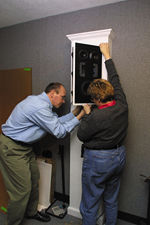 The unique AMC900dp is a full-range, in-wall dipole that uses two 1-inch aluminum-dome tweeters, a 3.5-inch midrange, and a 6.5-inch copolymer woofer. Naturally, the AMC900dp's design goal is spacious dipolar performance and optimum polar response. To achieve this, it uses a large figure-eight radiation pattern that directs a wider null at the listeners. Helping in this effort are the two steerable tweeters, set at roughly 45-degree angles firing front- and backward, and the sideways-mounted midrange, which fires toward the front of the room and is set in a 3-inch-deep indentation in the front baffle. A roughly 3-inch-wide metal plate covers part of the opening, further diffusing the image and expanding the null. The AMC900dp is 23.25 inches high by 13.25 wide, with a weight of 22 pounds. Unlike many in-walls, the unit has its own cabinet (3.75 inches deep), thus eliminating many wall-cavity mounting concerns. The speakers flush-mount to the wall with a matte-white trim, and custom paint and grille options are available.
The unique AMC900dp is a full-range, in-wall dipole that uses two 1-inch aluminum-dome tweeters, a 3.5-inch midrange, and a 6.5-inch copolymer woofer. Naturally, the AMC900dp's design goal is spacious dipolar performance and optimum polar response. To achieve this, it uses a large figure-eight radiation pattern that directs a wider null at the listeners. Helping in this effort are the two steerable tweeters, set at roughly 45-degree angles firing front- and backward, and the sideways-mounted midrange, which fires toward the front of the room and is set in a 3-inch-deep indentation in the front baffle. A roughly 3-inch-wide metal plate covers part of the opening, further diffusing the image and expanding the null. The AMC900dp is 23.25 inches high by 13.25 wide, with a weight of 22 pounds. Unlike many in-walls, the unit has its own cabinet (3.75 inches deep), thus eliminating many wall-cavity mounting concerns. The speakers flush-mount to the wall with a matte-white trim, and custom paint and grille options are available.
A THX Ultra 2-certified sub has to move considerable air to meet the new spec (including being flat to 20 hertz), and Snell's ICS Sub24 is ready with two 12-inch woofers, two front-firing ports, and 450 watts of RMS amplifier power. The ICS Sub24 is precisely matched to the XA1900THX, although you can use its internal crossovers to blend it with other speakers, as well. Obviously, there's a THX input that bypasses all of the onboard filters, or you can go it alone with an adjustable low-pass filter (50 to 150 Hz), gain control, and phase control. Straying little from its THX roots, the high-pass filter remains fixed at 80 Hz and 12 dB per octave no matter what. The quality cabinet measures 17.5 inches high by 29 wide by 22.25 deep and weighs 130 pounds.
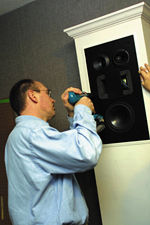 Setup
Setup
Taking this new Ultra 2 gear on its trial run in an idealized manner probably wouldn't make a lot of sense. For better or worse, there are a number of factors beyond bottom-line sound quality that go into the design of the modern listening environment. Aesthetics is chief among these, especially as the system price begins to grow. Thus, rather than position this system's speakers the way I often do (giving no consideration whatsoever to looks), I placed them in a more-realistic configuration.
ImageCrafters supplied a slick cabinet unit to house the front speakers, and Snell president/chief engineer David Smith and ImageCrafters technician Bill Malloy stopped by to help with the installation process. We placed the left and right fronts in enclosures at either end of the cabinet, and we placed the center channel and subwoofer in the cabinet's open middle area behind a microperforated filmscreen (see the sidebar below for details). We all know that it isn't ideal to put speakers in cabinets and behind screens, but this is the reality of many contemporary theaters—one that Ultra 2 and these components are designed to address.
